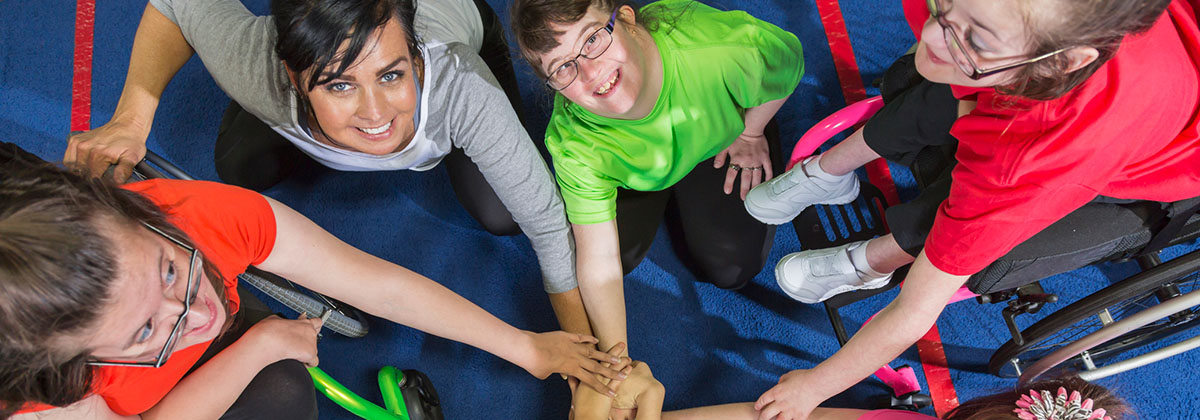
To engage in sport and physical activity, individuals must be aware of what opportunities exist for them, and when they try an activity for the first time, it is critical that the experience is positive. That is why Sport for Life emphasizes the two pre-stages of Awareness and First Involvement.
Awareness Pre-Stage
Awareness promotes an understanding of opportunities to get involved in sport and physical activity. It highlights opportunities for persons of all abilities to participate in sport, become an athlete, and go as far as their ability and motivation will take them. In Awareness, prospective participants and leaders are informed of the range of activities available and how they can take part.
Awareness Checklist
- Provide information about the opportunities for all abilities and backgrounds.
- Provide opportunities for all abilities and backgrounds to practice or compete in the same location and at the same time.
- Provide marketing and collateral material that showcases and is welcoming to all abilities and encompasses the diversity of the population, including information on websites, newsletters, and publications. It is also important to include translation options where appropriate.
- Engage with rehabilitation centres to let those with newly acquired disabilities know that they can take part; create relationships with settlement agencies, Friendship centres, and health care practitioners to promote the diversity of programming and the expertise of staff to accommodate and welcome new participants and those requiring additional support to programs.
- Provide opportunities within the school system for all abilities and backgrounds to take part.
- Provide information materials that can be used by physicians, physiotherapists, and other health professionals when talking to individuals about their options for sport & physical activity.
- Provide information materials that can be used to help physical education teachers ensure that students of all abilities and backgrounds meet required curriculum outcomes.
- Provide awareness raising presentations to teacher education, physiotherapy, recreation/sport management, and other university/college programs that are training future leaders/practitioners.
- Provide opportunities for elite athletes to speak at schools about sport and the opportunities it provides for BOTH able bodied athletes and those with a disability. Ensure diversity of gender, culture, and backgrounds for these presentations.
- Engage with community recreation programs, and provide information to program organizers on where they can direct anyone showing an interest in getting active.
First Involvement Pre-stage
First involvement refers to the first experiences participants have in sport. In this phase it is critical to ensure individuals have a positive first experience in an activity as negative first experiences can lead to non-participation. Organizations and leaders need to create a safe, welcoming, and inclusive environment for participants with developmentally appropriate instruction, adapted equipment, and facilities with a program orientation they will nurture the desire and confidence to participate for life. Clear direction should be provided to participants with regarding their second involvement.
First Involvement Checklist
- Provide training to coaches and leaders (and other first point of entry individuals such a receptionists) to deal with an initial approach by a person with a disability or a person from a different background. Develop and practice a script.
- Provide opportunities for and be welcoming to ALL new participants, including those with a disability or from various backgrounds.
- Provide sensitivity training at all levels of the organization to ensure that the culture of the organization is prepared for and welcoming of diversity.
- Develop an accessibility checklist that clubs or facilities can use to determine if sport and physical activity opportunities are accessible. These checklists should include the four facets of universal accessibility.
- If the facility is physically not accessible, research, and develop strategies that it can be inexpensively made accessible, or can accessibility be achieved through “social engineering” – rallying necessary support for the potential athlete to overcome barriers.
- Develop partnerships with local organizations for persons with a disability, Friendship centres, settlement agencies, and health care organizations, so that individuals who have relationships with those organizations KNOW they will be positively received if they want to try out a sport or program.
- Proactively follow-up with first-time participants few days after their first involvement to let them know they are welcomed back, and to gather feedback on any improvements that the organization could do to make the experience better.
- Provide available specialized equipment for participants to try out the sport or physical activity at very low cost (or no cost), particularly where equipment is a critical component of ongoing engagement (e.g. wheelchair rugby, road racing, hockey, wheelchair tennis, basketball, etc.). Ensure there are suitable sized equipment readily available for younger participants.
- Engage the participants in their sport or physical activity at their own comfort level, where possible. Allow flexibility in length of commitment (short- or long-term), especially for first timers.
- Provide support personnel available (provided by the sport), when necessary, or be welcoming to the sport if they come with the participant.
